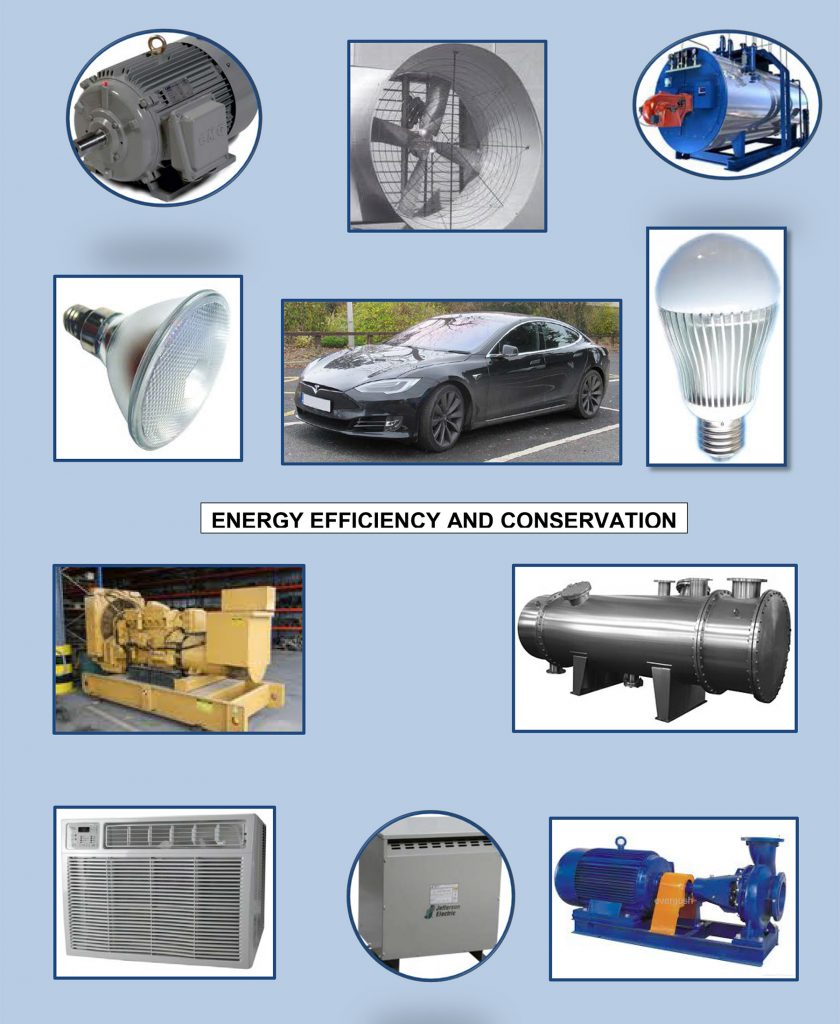What does it take to stop global warming?
We have to reach net zero, the elimination of man-made fossil fuel emissions. Any emissions that can’t be eliminated have to be offset by the absorption and sequestration of greenhouse gases on earth. This would require an expansion of the earth’s forests and plants that absorb and sequester CO2.
What has to be done
The steps necessary to eliminate greenhouse gas emissions are obvious and can be accomplished with today’s technology. Any program to stop global warming has to accomplish the following seven tasks:
- Improve energy use efficiency and conservation
- Produce all electricity with renewables
- Use electricity to produce most power and heat rather than fossil fuels
- Transition to electric vehicles
- Use hydrogen and synthetic fuels where needed to replace fossil fuels
- Stop deforestation and plant billions of trees
- Change agricultural practices to emit less and capture more greenhouse gases
Here we provide a brief description of each of these actions. The first five involve the displacement of fossil fuels, which account for about 75 percent of greenhouse gas emissions. The two remaining items deal with agriculture, forestry, and land use changes that account for about 25 percent of greenhouse gas emissions.
Energy efficiency and conservation has been improving by about 2.0 percent/per year. With the right incentives, it should be possible to increase this to 3.0 percent/year. This would reduce greenhouse gas emissions by an additional 29 percent by 2050.

Produce all electricity with renewables. Electricity from renewables, solar and wind, is now cheaper than fossil fuels and nuclear power in most locations. The cost of electricity from solar and wind continues to decline due to technical advances and improving economies of scale. Improved batteries are being developed to store wind and solar energy. A side benefit of using renewables is elimination of most of the world’s air pollution
Where possible, use electricity to produce most power and heat instead of fossil fuels. Some examples would be to use heat pumps instead of furnaces to heat buildings, use microwave, induction, and dielectric heating rather than gas-fired ovens, and use hydrogen instead of coke (produced from coal) in the production of steel.
Transition to electric vehicles. Most oil is used as fuel for transportation from motor vehicles to airplanes and ships. To reduce oil use, we need to eliminate the internal combustion engine and transition to electric vehicles where possible or to those powered by fuel cells that use hydrogen. This transition is underway with all major automobile companies redesigning their vehicles and retooling their factories to produce electric vehicles in the future. Electric buses, large trucks, and even passenger ferries are starting to become available.
Use hydrogen and synthetic fuels where needed. There will be some applications such as airline travel that will need liquid or gaseous fuels. It is possible to produce the equivalents of aviation fuel or gasoline using CO2 extracted from the atmosphere and hydrogen produced by electrolysis. Fuels made with recycled CO2 will be carbon neutral if the processes to make these fuels are powered by electricity from renewables. They are carbon neutral and do not reduce CO2 in the atmosphere. The CO2 removed is returned to the atmosphere when the synthetic fuel is burned.
Stop deforestation and plant billions of trees. The world’s forests, especially tropical rain forests, absorb and sequester large amounts of CO2 annually. Destroying these forests reduces the amount of CO2 removed from the atmosphere. It’s important to stop the destruction of these forests and also plant billions of new trees to replace those lost and to increase the absorption and sequestration of CO2, the main greenhouse gas.
Change agriculture to reduce emissions of methane and nitrous oxides.
Farming methods need to be changed to sequester more CO2 and to use less nitrogen fertilizers. We need to improve cattle raising for meat and dairy products, a main source of both methane and nitrous oxides. Cattle raising is one of the world’s single largest sources of greenhouse gases. Creating rangeland for cattle and farmland to grow cattle feed is one of the driving forces behind deforestation.
The technology needed is being implemented in large commercial projects throughout the world. It can be done. We just aren’t moving fast enough and on a large enough scale. The longer we delay, the worse the problem becomes. We need to take action immediately.
William Fletcher and Craig Smith
Reaching Net Zero: What it Takes to Solve the Global Climate Crisis
www.reachingnetzero.com

